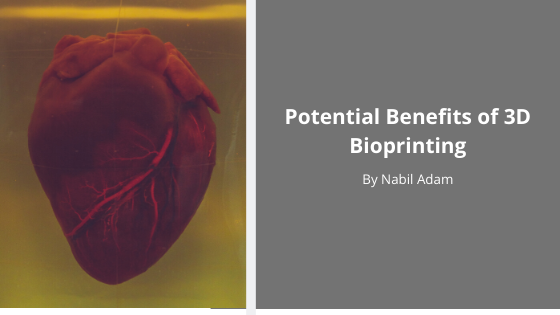Imagine surviving a severe heart attack only to discover that while you’re alive, your heart has been scarred so badly that you’ll need to have a heart transplant. But instead of your name going on a years-long waitlist for a new heart, you’re able to have one printed for you. Yes, printed. While it far fetched, the ability to print three-dimensional organs is closer than you may think. This type of 3D Bioprinting has significant implications for research, animal testing, and organ transplantation.
What is 3D Bioprinting?
Basic 3D printing takes a digital file and creates a solid three-dimensional object with it through the additive layering process. 3D printing requires a source material, often plastic or metal, that can be built up layer by layer to create the object. With Bioprinting, that same process is used to create living tissues using living cells as source material. The process is somewhat different since living tissue requires a specific nutrient-rich environment to survive rather than just being layered on a platform. Typically in Bioprinting, the environment is created in the form of a microgel similar in consistency to gelatin and is the cells are layered around a 3D scaffold of collagen or biodegradable polymers to create functional tissue.
Though this technology is still very much in its infancy and far from commercial production, it holds a great deal of promise. It has the potential to change lives. Here are some of the potential implications.
Research & Animal Testing
Prior to drugs being used in human populations, they are frequently trialed in lab animals. Even if a clinical trial works on animals, it still doesn’t mean that it will be effective for humans. But with Bioprinting, there is a potential to test these medications on actual human tissues to determine their safety and efficacy. This could eliminate the need for animal testing entirely.
Organ Transplant
While the elimination of animal testing is a benefit of bioprinting technologies, it is an even more significant factor in solving the shortage of organs for transplant patients. The ability to create human organs from scratch is a potential game-changer in transplant medicine. It could develop organs from an individual’s own stem cells, eliminating the potential for organ rejection.
While there are ethical concerns to be addressed, 3D Bioprinting certainly has benefits for both research and medical treatments for a myriad of issues.

